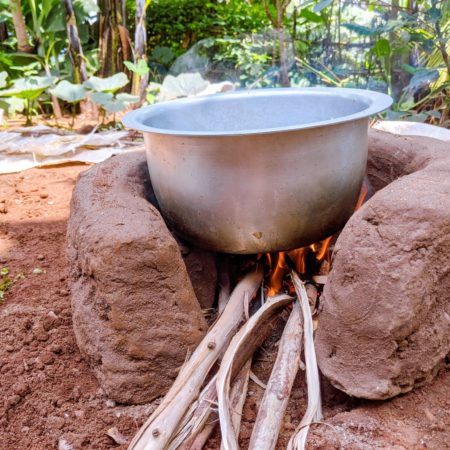The serious air pollution problem in developing countries: Field research in Rwanda

過去記事『途上国で深刻な家庭での大気汚染!ルワンダで調査してみた』の英語版です。
I am Norihiro Takeda. I offer study tours and information about Rwanda, Africa.
Asked by Yo Ishigaki, Ph.D., National University of Electro-Communications, Tokyo, Japan , I am conducting field research on household air pollution. This is the first report on the baseline survey. Using a special sensor to measure air pollution, the baseline survey showed us how serious air pollution is at household levels in Rwanda.
Contents
Household air pollution is a bigger issue than you think!

Firewood used at a target household
7 million people die of air pollution every year. You may imagine fumes from large-scaled factories or exhaust gas from vehicles. However, it is said that air pollution occurs inside houses and more than half of the death causes of air pollution is indoor air pollution. In developing countries such as Rwanda, firewood and charcoal used as fuels for cooking are used inside houses, being a major cause for air pollution.
参考:WHO:環境汚染死因1位は料理用燃料 | ナショナルジオグラフィック日本版サイト
Methodology
The purpose of this field research is to use cleaner cooking stoves and compare the air quality with a censor to tackle this issue of air pollution. There are two types of sensors used in the field research: a type to connect an Android smartphone and measure with a special application and the other game-machine type measuring equipment with the game characters changing depending on the level of air pollution.
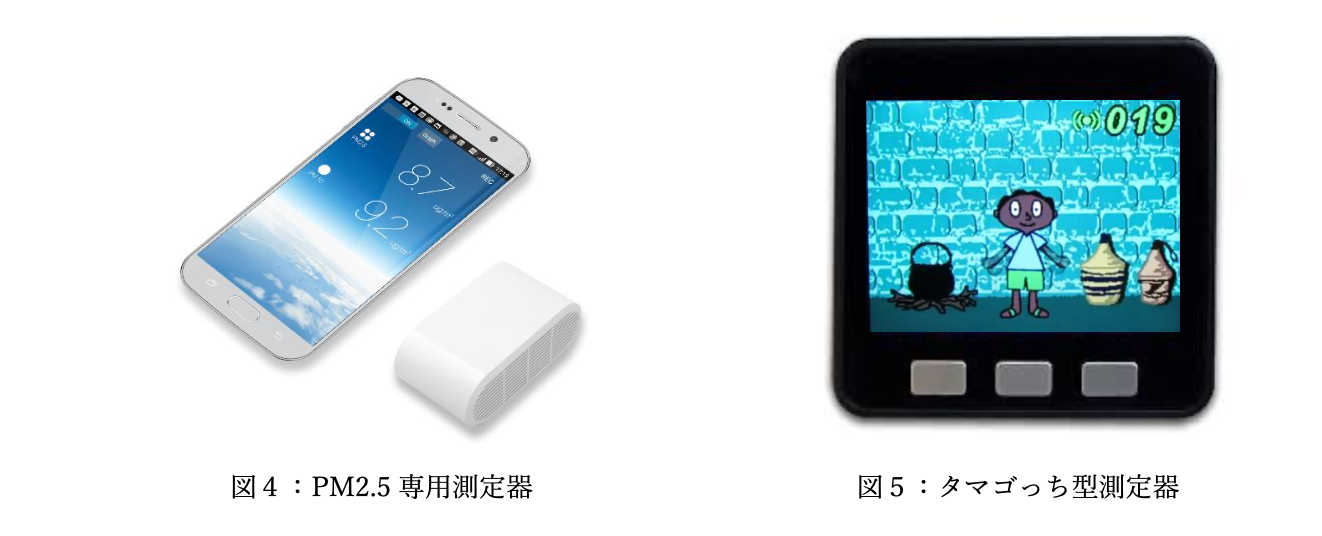
Measuring equipment used in the field research
This time, we conducted interviews on the everyday cooking environment and level of air pollution as the baseline survey before using cleaner cooking stoves.
Interviews
The Mukamurara family in Ruhango village, Kigali cell, Kigali sector, Nyarugenge District in Kigali, a capital city of Rwanda helped the baseline survey.
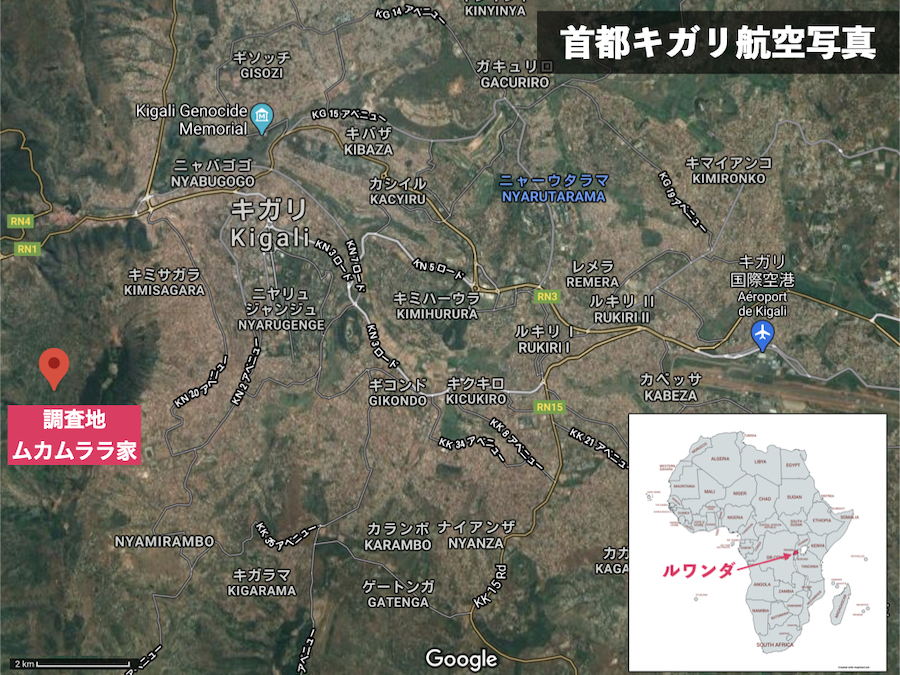
A house of the Mukamurara Family located at the bottom of Mt.Kigali, west part of Kigali
The interviews were conducted by an interpreter, Satoka Oe in Kinyarwanda, a national language of Rwanda.
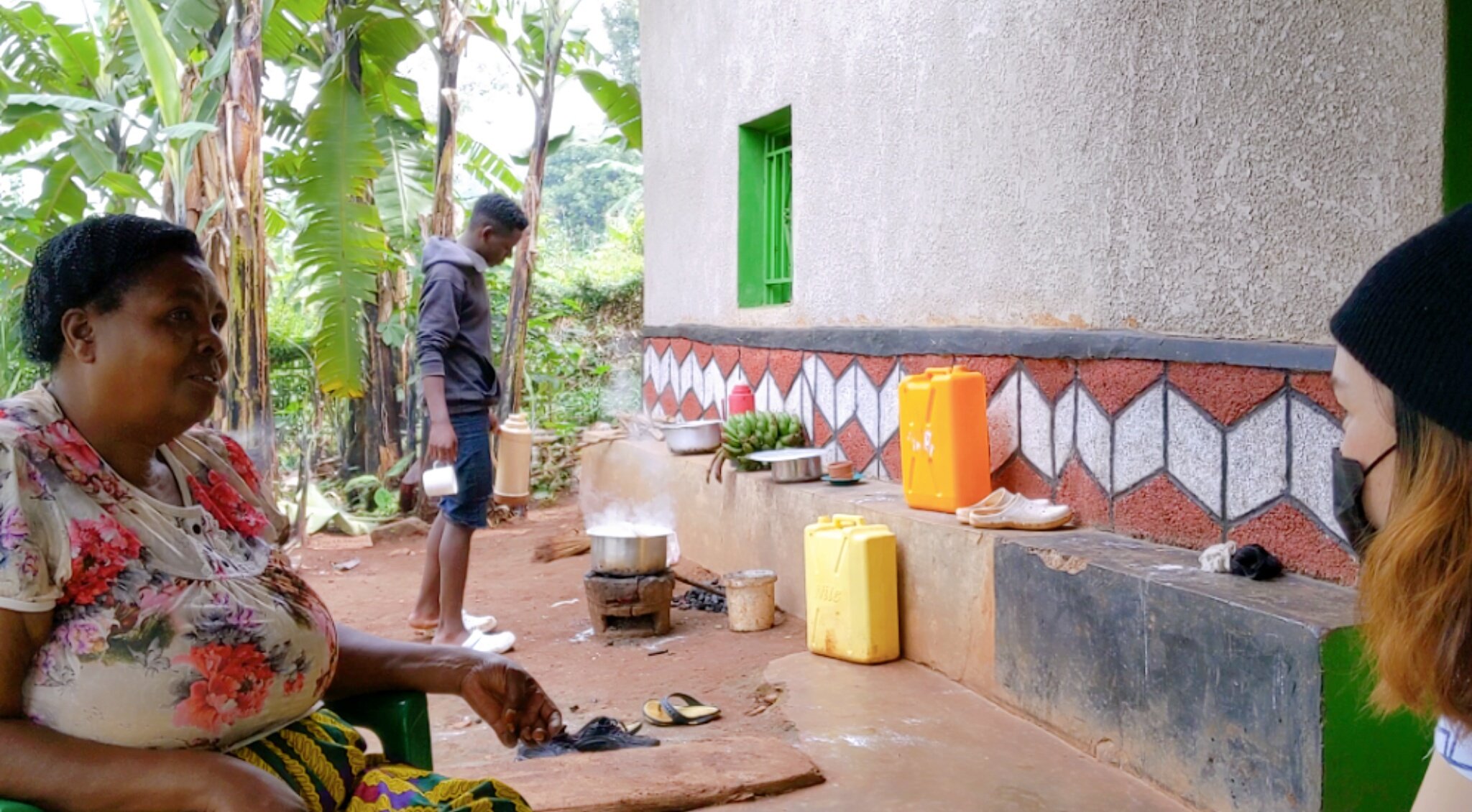
Mukamurara during the interview
Cooking environment
| Questions | Responses
|
| What types of fuels do you use? | Mainly firewood and charcoal |
| What are the ages of kitchen users in the family? | Family members in their sixties (Other family members include one teenager, one in the twenties, and two in the thirties) |
| How many hours do they spend in the kitchen in total? | For 4 hours (2 hours, twice a day) |
| What time do they cook? | Around 11 a.m. and 5 p.m. |
| Do they get ventilation when cooking? | Yes, cooked outside. |
| Do your children come to the kitchen? | No |
This family mainly uses firewood as the main fuel and charcoal in some cases.
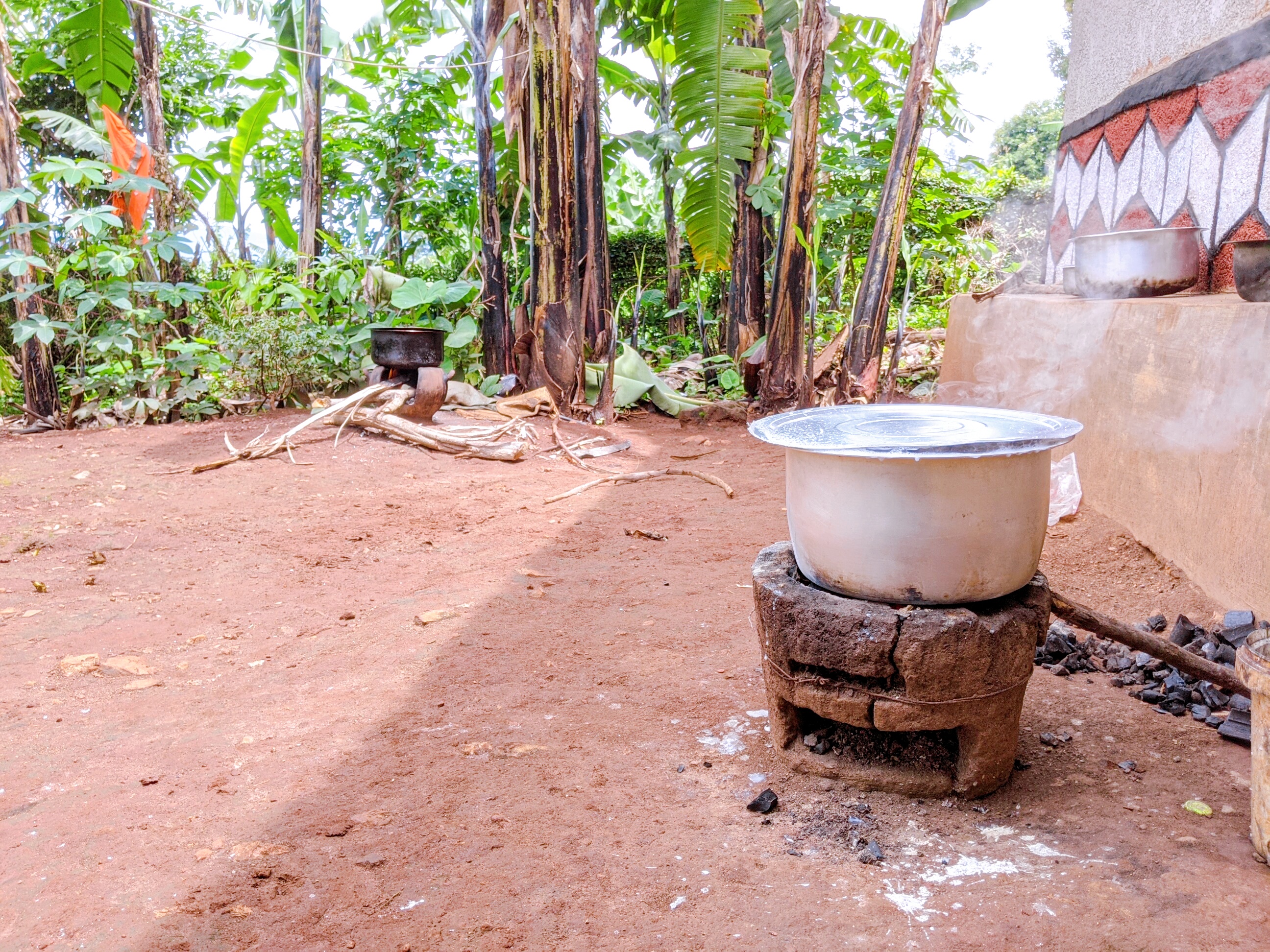
Charcoals used in the front cooking stove, firewood used in the back
Using two clay cooking stoves called Imbabura in Kinyarwanda, they were boiling beans in one cooking stove with firewood and cooking porridge called Igikoma with water and powders of sorghum, soya and corns, and sugar in the other stove with charcoal.
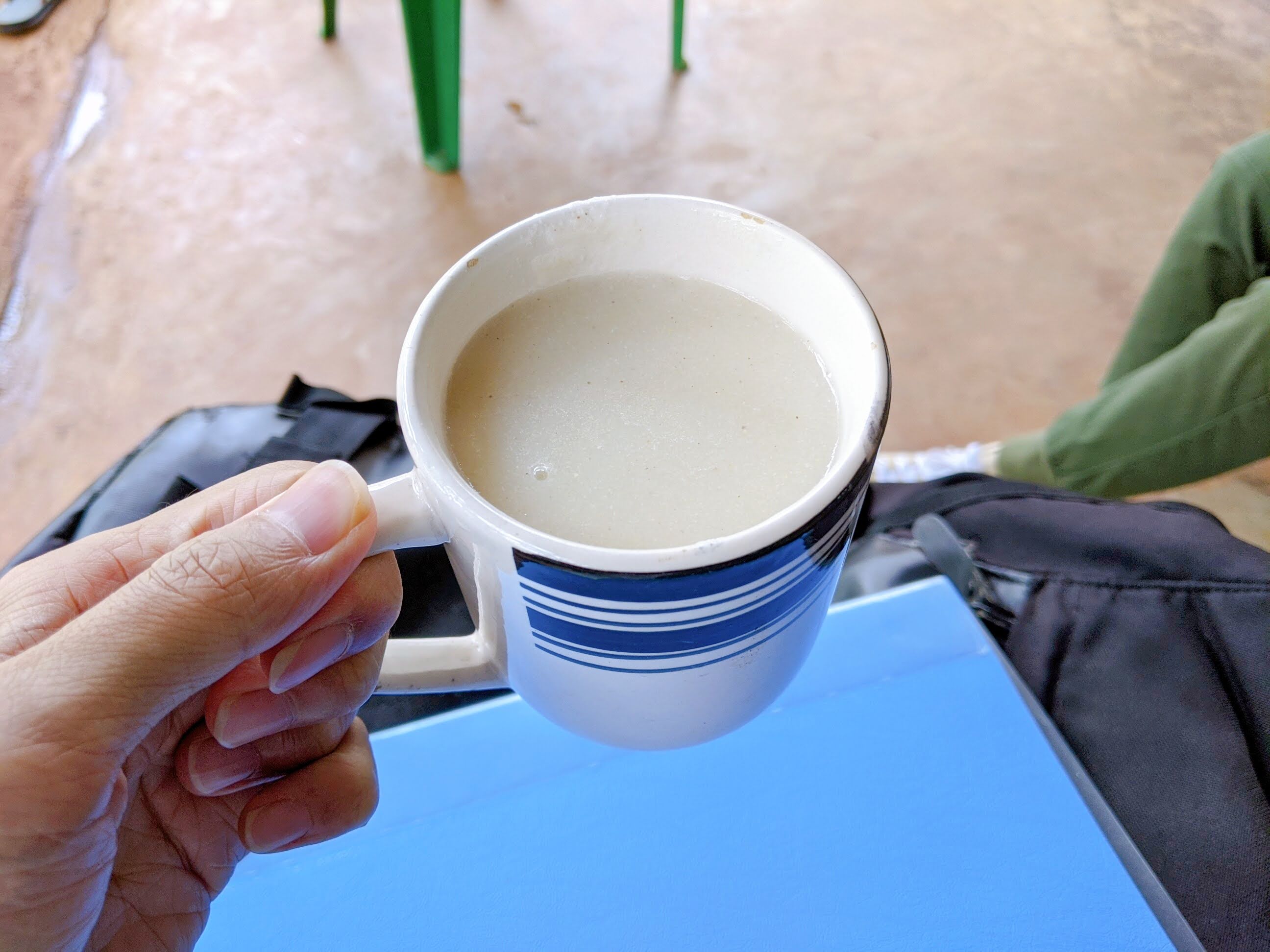
We were served 2 cups of Igikoma, Rwandan sweet and nutritious porridge in a mug.
Difference between firewood and charcoal (price and volume of fume)
Firewood and charcoal are used differently as follows.
| Firewood | Charcoal | |
| Price | Cheap, can be used for 2 months for around 1,000 yen. →Used when boiling beans and Isombe (a dish of boiled cassava leaves) that takes comparatively longer to cook. | Costly, can be used for less than a month for around 1,200 yen. →Used when cooking rice and potatoes that can be cooked in a short time. |
| Time | Fast to ignite | Takes longer to ignite |
| Physical burdens | More burdens due to more fumes and physical movements for fire adjustment →Other house members in their twenties and thirties also use them. | Less physical burdens →Used by Mukamurara who is older than the others. |
Notes: Some families burn free branches and leaves they collect from their neighborhoods instead of purchasing firewood. These branches and leaves are not properly dried with a lot of water and release a lot of fumes.
Health risks and symptoms
Almost all items for symptoms we prepared beforehand were applicable.
| Questions | Answers |
| Eye pain | Yes |
| Burned eyes | Yes, become red sometimes |
| Itchy eyes | Yes |
| Tears | Yes, especially when using firewood |
| Throat pain | Yes, especially when blowing to make the fire bigger |
| Cuffing | None |
| Headache | Yes, when using firewoods |
| Sneeze | Yes |
| Running nose | Yes |
| Itchy nose | None |
This interview gave us new findings that firewood releases more fumes than charcoal, causing more serious symptoms. When I approached firewood during cooking, tears came out and my eyes were burned.
The following is Mukamurara’s thought-provoking comments.
- I kept using firewood and charcoal, knowing that cooking using them has health risks.
- I did not know some symptoms whose causes were cooking using firewood and charcoal.
- There are many people with similar symptoms around me who may not be aware that they are caused by cooking.
- Especially, the older they get like their seventies and eighties, the more symptoms they have without knowing the causes.
After the interview, we strongly felt that we need to educate people about the health risks caused by cooking using firewood and charcoal and specific solutions. The air pollution concentration we measured with a sensor showed us how serious this problem is. The following are the results.
Measuring the air pollution concentration
Finally we measured the air pollution concentration with the sensor. Kigali is known for its high air pollution concentration. What results would we get if we measure near burning firewood and charcoal? Please see a short video from Twitter.
ルワンダで薪調理の大気汚染濃度調査🌍
数値(AQI)の目安↓
0-50 良い
50-100 中程度
100-150 健康に悪い(過敏グループ)
150-200 健康に悪い
200-300 非常に健康に悪い
300-500 危険調理時は危険レベルを優に超えることも。肺がんなどの病気につながるので改善が必要です(煙で目痛かった。。) pic.twitter.com/Wo4yGtjY4F
— タケダノリヒロ🇷🇼ルワンダ在住 (@NoReHero) February 20, 2021
Measuring with the sensor, we now know that
- The AQI(Air Quality Index) is over 2000 if high! We managed to film the moment of the AQI 150~800 in the short video above.
- Figures change even at the same place possibly because winds change the direction of fumes.
【What is the AQI?】
The AQI is an index called Air Quality Index. The AQI value over 100 is ‘Unhealthy for Sensitive Groups’ i.e. those with underlying conditions such as chronic heart or lung ailments; transient symptoms of irritation e.g. eye irritation, sneezing or coughing in some of the healthy population. Over 150 is ‘Unhealthy’. Over 300 is ‘Hazardous’. In Kigali, the AQI is usually over 100. My house located near the main road has the AQI value around 150.
.001.jpeg)
The sensor showed the value of 2,000 at maximum though I could not film well.
Kigali is known for its high air pollution with the usual AQI around 150. However, we were quite shocked by the figures of 2000, 10 times of the Kigali’s AQI near the burning firewood. We were able to observe how cooking using firewood releases air pollutants.
A layout of air pollution concentration
The following layout is each measuring point of the house.
- Point A (in front of firewood)
- Point B (slightly far from the fire)
- Point C (far from the fire)
- Point D (indoor)
- Point E (in front of charcoal)
The following layout shows the average values after measuring twice at each point. Measurement is done 1m high from each point. This height is just the same as that of a person using the fire bending over.
.001.jpeg)
The highest value was 177.5 at Point A in front of burning firewood. It can be said that firewood has higher health risks than charcoal as Point E in front of burning charcoal was 160.0. Surprisingly, the value of indoor, Point D (=166.0) was high. The polluted air might easily accumulate inside the house. This result shows that staying indoor is not necessarily safe.
Next, the following is the results of measurement of PM2.5 value in the same way.
.002.jpeg)
Point A in front of firewood was the highest, and Point D, indoor was the second highest.
The following is the table of the results of all measurements.
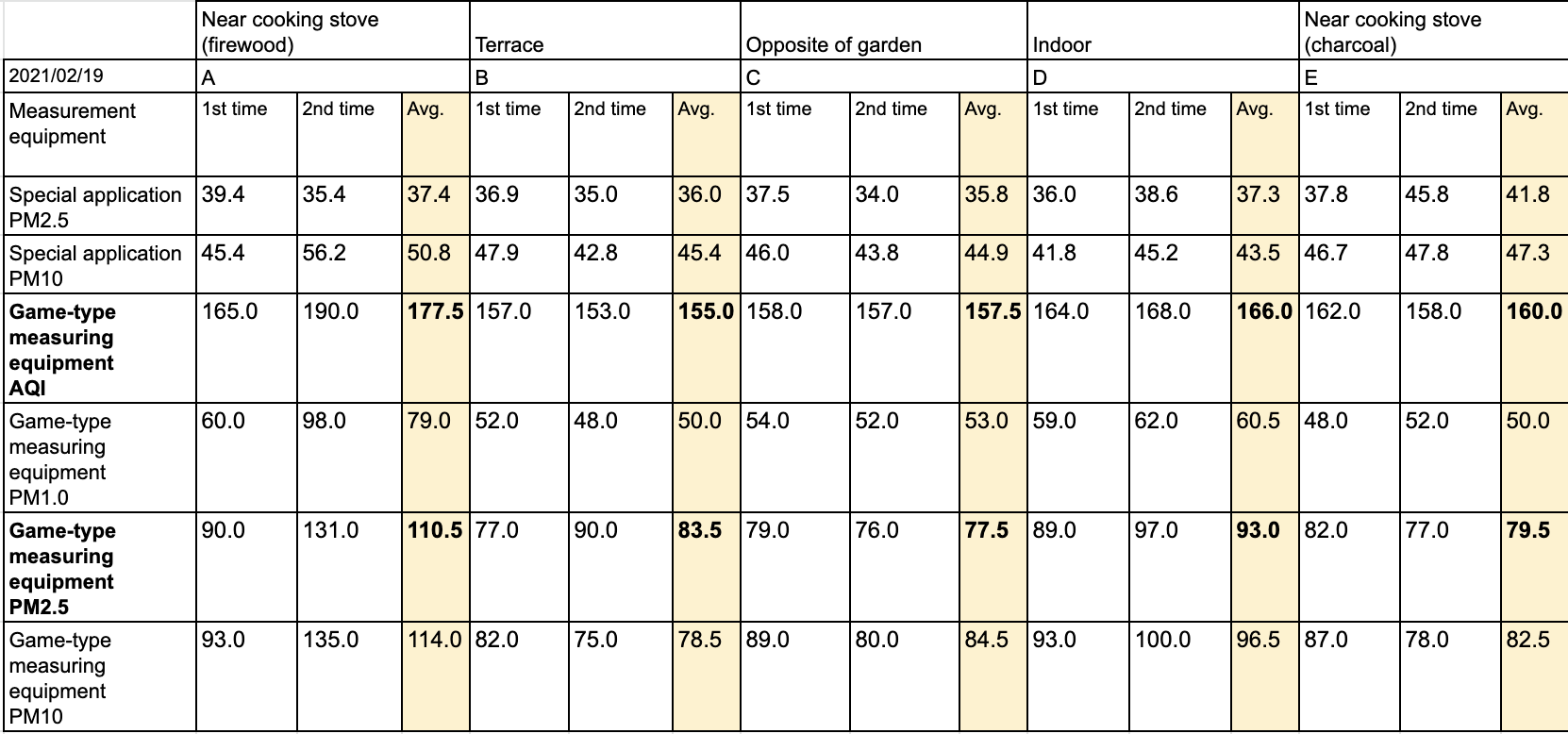
The results of measurement (‘Game-type measuring equipment AQI’ and ‘Game-type measuring equipment PM2.5’ shown in the layout above.)
Performance survey of cooking stove
We also measured the time to boil water as another research item. It took 3 minutes 45 seconds to boil 500ml of water.
Next time, we will create a cleaner cooking stove and compare its performance with a traditional cooking stove.
Creating cooking stove next time!
We only conducted a baseline survey this time. Next time, we will create a cleaner cooking stove, the main part of this research. We will try to create a ‘Kamado Yoko’, a cooking stove developed by a JICA (Japan International Cooperation Agency) volunteer in Madagascar before, in Rwanda. *Kamado means a cooking stove in Japanese.
Kamado Yoko
- Can be made with cheap materials to easily get
- Has higher burning efficiency and uses less firewood and charcoal
- Releases less fumes
- Shortens cooking time
Kamado Yoko is a great cooking stove!
We will create this Yoko Cooking Stove that we will ask Mukamurara to use for a while. After that, we will compare the same survey to compare the results. This is my first time to create a cooking stove so I am worried if the level of air pollution can really be improved. I will try with everyone’s help. I hope it will be great so please stay tuned!
Follow-up report
We created Kamado Yoko and waiting 1-2 weeks for it to dry.
元マダガスカル青年海外協力隊の中西葉子さんが普及させたという「カマドヨーコ」をルワンダで再現!材料は粘土、赤土、灰、藁、水。作業自体は2時間もかからず簡単でした!
覆いのない焚き火と比べて薪と時間の節約になり、煙も少なくなるはず。
1-2週間乾燥させたらいよいよ使用開始!ワクワク🔥 pic.twitter.com/CGOaukF1xe— タケダノリヒロ🇷🇼ルワンダ在住 (@NoReHero) February 26, 2021



